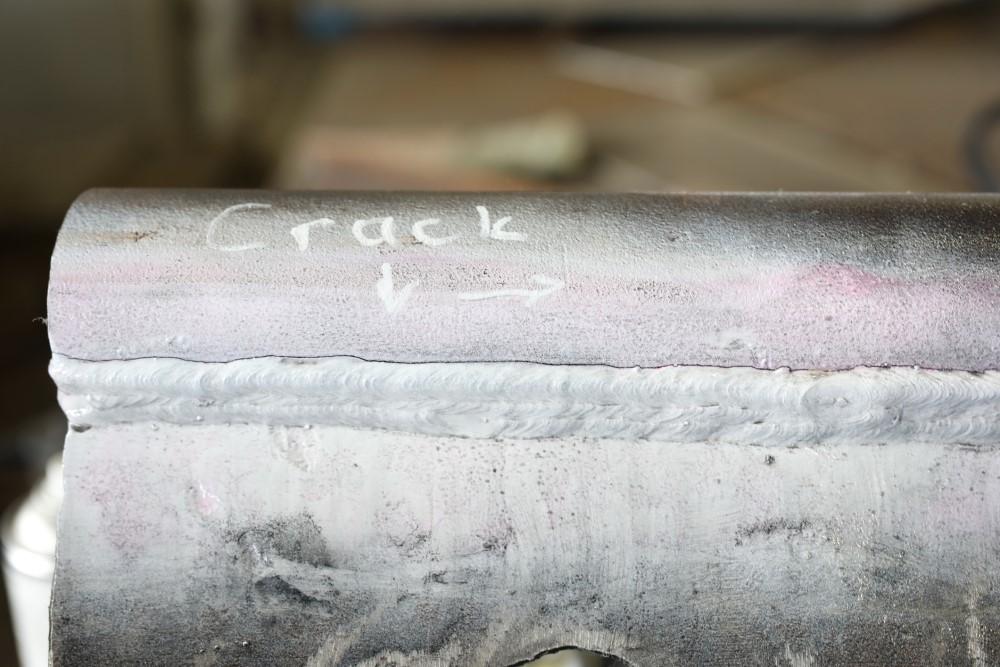Preventing Weld Undercut Made Easy: Secret Techniques Revealed
Preventing Weld Undercut Made Easy: Secret Techniques Revealed
Blog Article
Grasping the Art of Welding: How to Avoid Undercut Welding Issues for Flawless Manufacture Outcomes
By recognizing the root causes of undercut welding and carrying out reliable strategies to stop it, welders can boost their craft to brand-new levels of excellence. In the pursuit of flawless fabrication results, mastering the art of welding to avoid undercut issues is not just an ability but a necessity for those striving for perfection in their work.
Understanding Undercut Welding

To stop undercut welding, welders ought to make certain appropriate welding parameters, such as changing the current, voltage, traveling speed, and maintaining the proper electrode angle. By understanding the reasons of undercut welding and implementing preventive steps, welders can achieve premium, structurally sound welds.
Reasons of Undercut in Welding
Comprehending the aspects that add to undercut in welding is important for welders to create high-grade, structurally audio welds. When the weld steel does not properly fill the groove developed in between the base metal and the previously deposited weld metal, damaging takes place. Several aspects can result in damage in welding. One usual reason is extreme heat input. Welding at heats for extended durations can cause the base metal melting even more than desired, resulting in damage. Insufficient welding inaccurate or current welding rate can likewise add to damage. Inadequate current may not give sufficient heat to thaw the base and filler metals sufficiently, while excessive rate can stop proper blend, causing undercut. In addition, improper electrode angles or inaccurate torch adjustment techniques can develop areas of reduced weld metal deposition, advertising undercut. Recognizing these causes and implementing appropriate welding techniques can assist avoid damaging problems, guaranteeing solid and long lasting welds.
Techniques to Avoid Undercutting

To mitigate the threat of damaging in welding, welders can utilize calculated welding techniques targeted at boosting the quality and honesty of the weld joints. One effective method is to adjust the welding parameters, such as voltage, current, and travel speed, to make sure appropriate heat input and deposition. Keeping an ideal electrode angle and making certain consistent traveling rate can additionally aid prevent undercut. Additionally, using the correct welding technique for the specific joint arrangement, such as weave or stringer grains, can add to lowering damaging. Preventing weld undercut.
Additionally, appropriate joint preparation, consisting of guaranteeing clean base products devoid of pollutants and making use of the ideal welding consumables, is essential in avoiding undercut problems. Utilizing back-step welding techniques and controlling the weld bead profile can also aid disperse heat evenly and minimize the risk of undercut. Routine evaluation of the weld joint during and after welding, as well as implementing quality control actions, can help in discovering and dealing with undercutting concerns promptly. By applying these techniques faithfully, welders can accomplish perfect construction results with minimal undercut defects.
Value of Appropriate Welding Criteria
Selecting and preserving suitable welding parameters is crucial for achieving successful welds with Check Out Your URL marginal problems. Welding criteria describe variables such as voltage, existing, take a trip speed, electrode angle, and shielding gas flow rate that directly affect the welding procedure. These criteria have to be thoroughly changed based on the type of material being welded, its thickness, and the welding method utilized.
Correct welding criteria ensure the correct amount of warmth is used to thaw the base steels and filler product evenly. If the parameters are set too expensive, it can bring about too much warmth input, causing burn-through, spatter, or distortion. On the various other hand, if the criteria are too low, incomplete combination, lack of penetration, or undercutting might take place.
Quality Control in Welding Procedures

Final Thought
In final thought, grasping the art of welding requires an extensive understanding of undercut welding, its causes, and techniques to avoid it. By making sure appropriate welding parameters and applying quality assurance techniques, remarkable fabrication outcomes can be accomplished. It is essential for welders to continually pursue excellence in their welding operations to avoid undercut problems and create high-quality welds.
Undercut welding, an usual flaw in welding procedures, occurs when the weld steel does not appropriately fill the groove and leaves a groove or anxiety along the bonded joint.To avoid undercut welding, welders need to guarantee correct welding parameters, such as readjusting the current, voltage, travel rate, and Bonuses maintaining the right electrode angle. Poor welding incorrect or current welding rate can additionally contribute to undercut.To minimize the risk of Learn More undercutting in welding, welders can use strategic welding methods intended at boosting the quality and stability of the weld joints.In verdict, understanding the art of welding requires a detailed understanding of undercut welding, its causes, and techniques to avoid it.
Report this page